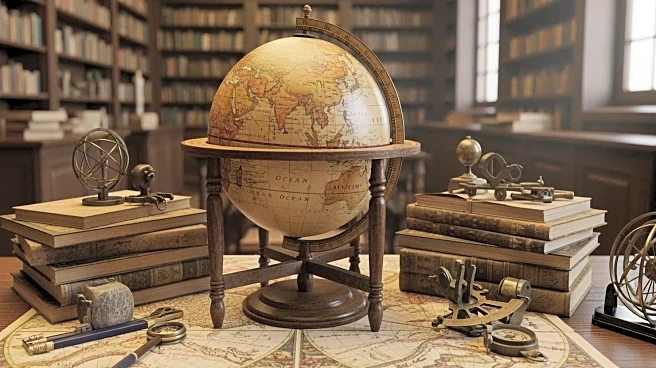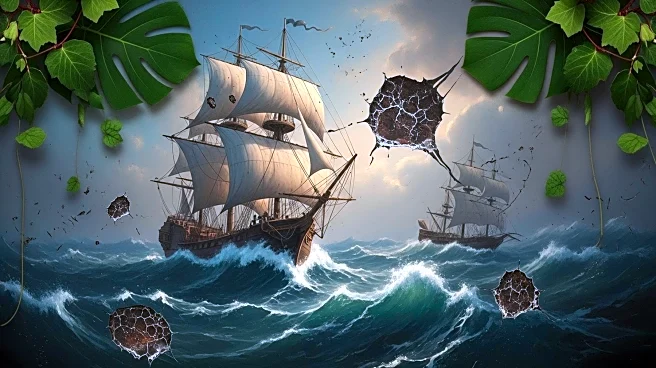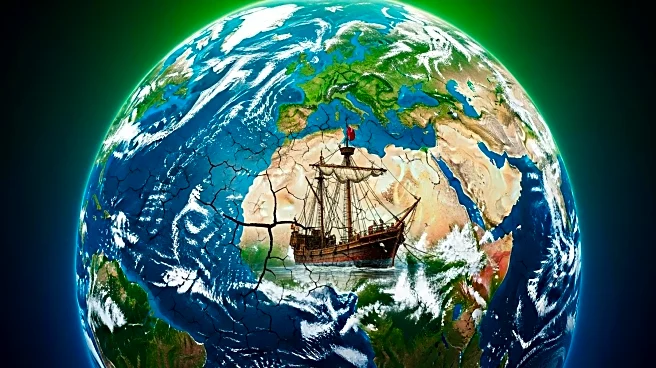What's Happening?
Geographer James Cheshire's new book, 'The Library of Lost Maps: An Archive of a World in Progress,' delves into the hidden treasures of the University College London's Map Library. Cheshire's exploration
reveals thousands of maps and atlases, including significant historical pieces like a 19th-century map of Italy and a pre-atomic bomb map of Hiroshima. The book highlights the role of maps in understanding historical events, such as a 1929 tourist map of Madrid stamped with a swastika, illustrating its use by military cartographers. Cheshire also discusses prominent figures in cartography, including Bruce Heezen and Marie Tharp, who mapped the ocean floor.
Why It's Important?
Cheshire's work emphasizes the importance of maps as tools for historical analysis and understanding. By uncovering these maps, he provides new insights into historical events and the evolution of cartography. The book serves as a tribute to the necessity of libraries and archives in preserving knowledge and fostering research. It highlights the intersection of geography, history, and technology, showcasing how maps can offer unique perspectives on the past. This exploration contributes to the broader understanding of how cartographic practices have shaped historical narratives and influenced geopolitical developments.
What's Next?
Cheshire's book is set to engage readers interested in history, geography, and cartography. It may inspire further research into the archives of maps and their historical significance. The publication could lead to increased interest in the preservation and study of cartographic materials, encouraging libraries and institutions to prioritize the maintenance of such archives. As readers delve into Cheshire's findings, there may be a renewed appreciation for the role of maps in historical documentation and education.
Beyond the Headlines
The book raises questions about the ethical implications of cartography, such as the use of maps for military purposes and their role in colonial expansion. It also explores the cultural significance of maps in shaping national identities and perceptions of space. Cheshire's work invites reflection on the power dynamics inherent in map-making and the responsibility of preserving historical artifacts. The book may prompt discussions on the future of cartography in the digital age and the importance of maintaining physical archives.













